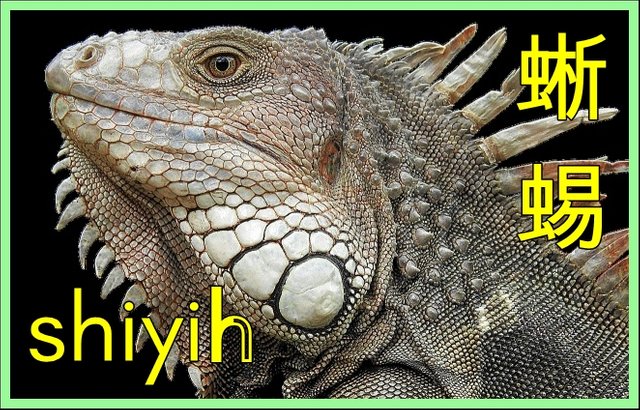
In #Chinese, several non-insects use the 虫 radical: lizards, frogs, toads, salamanders, lizards, bats, and hedgehogs
[0] 蜥蜴 xīyì / shiyi “lizards”
In #Mandarin, a less common name for #lizards is 四腳蛇 sìjiǎoshé / syhjeausher “[literally] four-legged snakes”. There are also words for specific types of lizards, such as chameleons 變色龍 biànsèlóng / biannsehlong “[literally] color shifting dragons” and geckos 壁虎 bìhǔ /bihhuu “[literally] wall tigers”
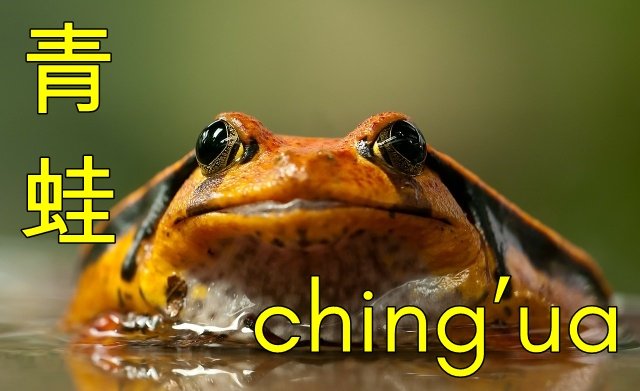
[1] 青蛙 qīngwā / ching’ua “frogs”
Notice that 青 in this context means “green” (the color of most #frogs).
In China, edible frogs are considered a #delicacy. On a menu, they will appear as 田雞 tiánjī / tyanji “[literally] field chickens”. [https://en.wikipedia.org/wiki/Chinese_edible_frog]
[judging by the slight accent, the young "chef" is probably Cantonese]
A smug, narrow-minded person can be referred to as 井底之蛙 jǐng dǐ zhī wā / jiing dii jy ua “a frog at the bottom of a well”.
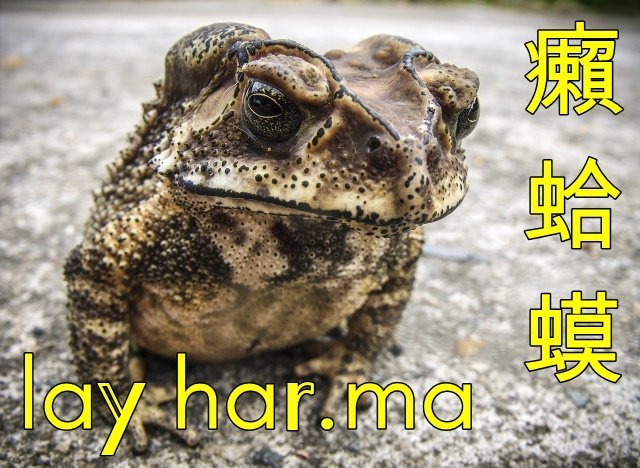
[2] 癩蛤蟆 lài háma / lay har.ma “toads”
Notice that the word 癩 lài / lay can be used to describe a mangy dog, among other things: 癩皮狗 làipígǒu / laypyigoou. One kind of toad called 蟾蜍 chánchú / charnchwu is used for making Chinese #medicine (toad venom and dried toad skins). https://en.wikipedia.org/wiki/Asiatic_toad
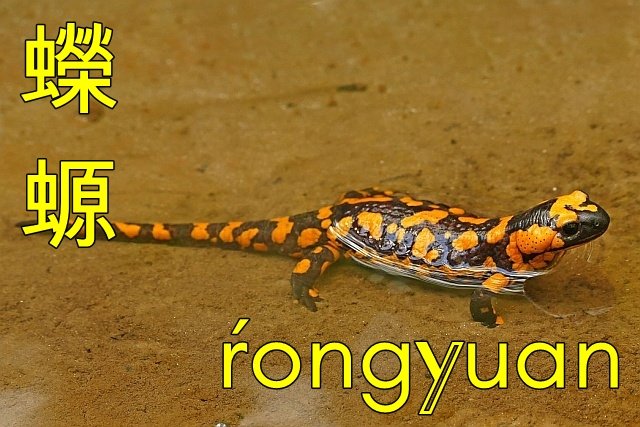
[3] 蠑螈 róngyuán / rongyuan “salamander”.
Giant salamanders 娃娃魚 wāwā yú / ua’uayu “[literally] doll fish” (because they make a sound that resembles human babies) are an endangered species can reach a length of 180 cm: https://en.wikipedia.org/wiki/Chinese_giant_salamander
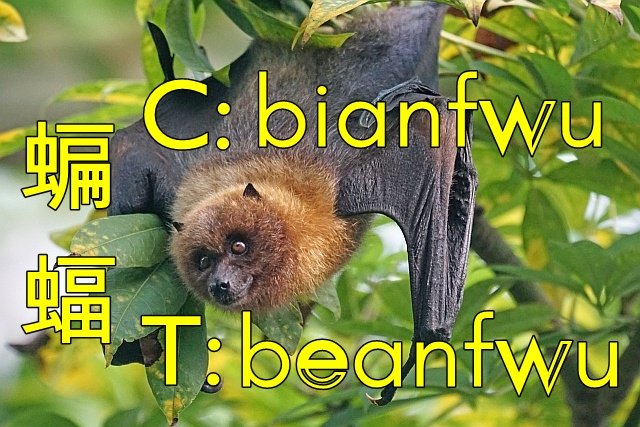
[4] 蝙蝠 biānfú / bianfwu “bat”
This particular animal is a fruit-eating bat called "flying fox" 遊狐蝠 yóuhúfú / youhwufwu (https://en.wikipedia.org/wiki/Pteropus):
Because 蝠 is pronounced the same as 福 fú / fwu "good fortune", bat decorations are considered auspicious. Unfortunately, the influence of idiotic Hollywood movies has made some people associate bats with vampires and witches.
Note that in Taiwan, 蝙蝠 is often pronounced as biǎnfú / beanfwu (1st syllable is in the 3rd tone) rather than the “official” pronunciation (1st syllable is in the 2nd tone).
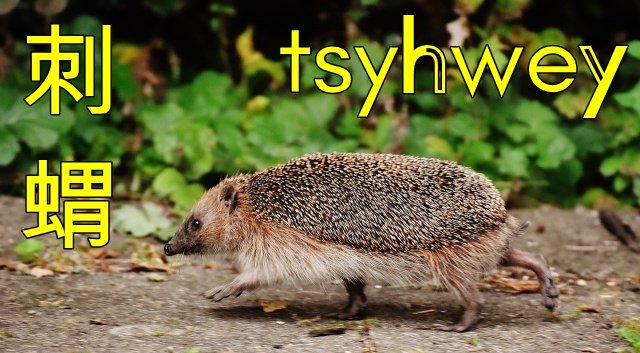
[5] 刺猬 cìwèi / tsyhwey “hedgehog”
#Hedgehogs are often confused with #porcupines: 豪豬 háozhū / haurju
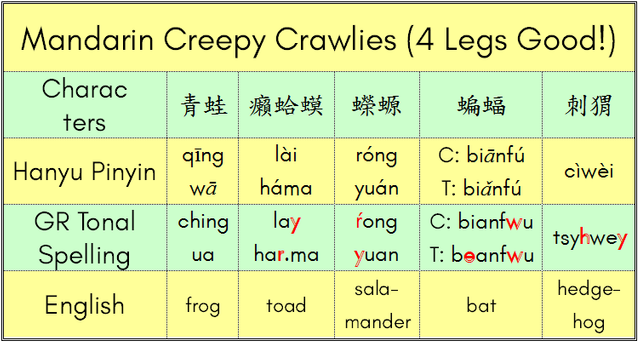
[Summary showing the Chinese names of five #beneficial creatures: frogs, toads, salamanders, lizards, and hedgehogs]
Phonetic Compounds
This post is part of a series that examines #phonetic compounds 形聲字 xíngshēngzì / shyngshengtzyh (Chinese characters where one part provides a general category of meaning, and the other part provides a #pronunciation clue [sometimes very accurate]).
Previous post:
Self Introduction: Enthusiastic INTP Polyglot
https://steemit.com/introduceyourself/@wentong-syhhae/enthusiastic-intp-polyglot
Image Credits:
Unless specifically marked, all images are Public Domain (copyright free), but modifications (colors, text etc.) are mine. Most tables (green and yellow columns) are designed by me and are CC--BY-SA @wentong-syhhae
Congratulations @wentong-syhhae! You have completed some achievement on Steemit and have been rewarded with new badge(s) :
Click on any badge to view your own Board of Honor on SteemitBoard.
For more information about SteemitBoard, click here
If you no longer want to receive notifications, reply to this comment with the word
STOPDownvoting a post can decrease pending rewards and make it less visible. Common reasons:
Submit